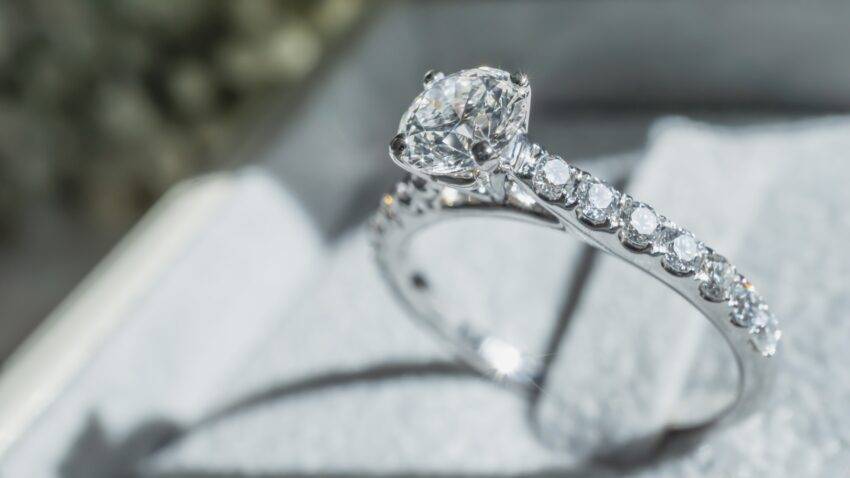
Lab-Grown Diamonds vs. Mined Diamonds
In recent years, the diamond industry has seen an increasing interest in lab grown diamonds or mined as a popular alternative to traditionally mined diamonds. As technology advances, it becomes easier to produce lab-created gems, prompting more consumers to explore this option. This article will explore the key differences, benefits, and myths surrounding lab-grown diamonds versus mined diamonds, giving you the information needed to make an informed decision.
What Are Lab-Grown Diamonds?
Lab-grown diamonds, often called synthetic or man-made diamonds, are diamonds created in controlled environments using sophisticated technology. These diamonds are chemically, physically, and optically identical to mined diamonds but are produced in laboratories rather than extracted from the Earth.
Lab-grown diamonds are created through two primary methods: High Pressure, High Temperature (HPHT) and Chemical Vapor Deposition (CVD). The HPHT method mimics the natural conditions under which diamonds form in the Earth, using extreme heat and pressure to grow diamonds in a lab. The CVD process involves placing carbon-rich gases in a vacuum chamber and applying heat to form layers of carbon atoms that eventually crystallize into diamonds.
What Are Mined Diamonds?
Mined diamonds, as the name suggests, are extracted from the Earth’s crust through traditional mining practices. These diamonds form naturally over millions of years deep within the Earth’s mantle under high pressure and heat. To retrieve these gems, mining companies dig extensive tunnels or create open-pit mines in regions rich in diamond deposits.
The Similarities Between Lab-Grown and Mined Diamonds
One of the most important aspects to understand is that lab-grown and mined diamonds are chemically identical. Both have the same crystal structure, hardness, and brilliance. Whether a diamond is formed naturally over millions of years in the Earth’s mantle or within a few weeks in a lab, its chemical makeup remains the same. In fact, without specialized equipment, even professional gemologists can struggle to differentiate between a lab-grown and mined diamond.
Both types of diamonds can be graded by reputable gemological institutes like the Gemological Institute of America (GIA) or the International Gemological Institute (IGI). The 4Cs—cut, clarity, color, and carat weight—apply to both lab-grown and mined diamonds equally.
The Environmental Impact
One of the most significant factors driving consumers toward lab-grown diamonds is their environmental footprint. Diamond mining, particularly in large-scale operations, is known to have a significant environmental impact. It can lead to deforestation, loss of biodiversity, soil erosion, and water pollution. Large mining sites often disturb ecosystems and displace local communities.
Lab-grown diamonds, on the other hand, are produced in controlled environments with a much smaller environmental impact. The energy used to create diamonds in a lab, while still substantial, is significantly lower than the energy and resources needed for mining operations. Furthermore, many lab-grown diamond manufacturers are working to reduce their carbon footprint by utilizing renewable energy sources.
Ethical Considerations
Beyond the environmental impact, ethical concerns often arise when discussing the diamond industry. Mined diamonds have been associated with human rights abuses, particularly in regions where “conflict diamonds” or “blood diamonds” have been sold to finance civil wars and insurgencies. While initiatives like the Kimberley Process aim to prevent the sale of conflict diamonds, the system is not foolproof, and ethical concerns remain.
Lab-grown diamonds offer a conflict-free alternative, as they are created in a controlled environment without the ethical issues associated with mining. Consumers who prioritize ethically sourced products often choose lab-grown diamonds to ensure their purchase does not contribute to human rights abuses.
Cost Differences Between Lab-Grown and Mined Diamonds
Another key difference between lab-grown and mined diamonds is the cost. Lab-grown diamonds are generally 20-40% less expensive than mined diamonds of similar size and quality. This price difference is largely due to the lower production costs of lab-grown diamonds, which do not require the extensive labor and resources needed for mining.
For consumers, this price difference means that a lab-grown diamond allows for greater flexibility in budget. Couples shopping for engagement rings, for example, can often afford a larger or higher-quality diamond when choosing a lab-grown option.
The Myths Surrounding Lab-Grown Diamonds
Despite their growing popularity, several myths surround lab-grown diamonds. One common misconception is that lab-grown diamonds are not “real” diamonds. As mentioned earlier, lab-grown diamonds are chemically and physically identical to mined diamonds. Another myth is that lab-grown diamonds lack the brilliance of natural diamonds. In reality, lab-grown diamonds can have the same level of sparkle and brilliance, as they undergo the same cutting and polishing process as mined diamonds.
Some consumers also believe that lab-grown diamonds will not retain their value over time. While it is true that lab-grown diamonds have a lower resale value compared to mined diamonds, this factor is often outweighed by the lower initial cost.
Market Trends and Consumer Preferences
The demand for lab-grown diamonds has surged in recent years, particularly among younger consumers. Many millennials and Gen Z buyers prioritize sustainability and ethical considerations, leading them to prefer lab-grown diamonds over mined ones. In addition, as the quality of lab-grown diamonds improves and the cost decreases, they are becoming an increasingly attractive option for consumers who want to get more value for their money.
Mined diamonds still maintain a strong presence in the market, particularly for buyers who value the history and tradition associated with natural gems. However, lab-grown diamonds are quickly gaining market share as their benefits become more widely known.
The Future of Diamonds
As technology continues to advance, it is likely that lab-grown diamonds will become even more popular. Innovations in the lab-grown diamond industry may lead to faster production times, lower costs, and even greater precision in the creation of diamonds. Additionally, as sustainability becomes an increasingly important factor in consumer purchasing decisions, the appeal of lab-grown diamonds will continue to grow.
Conclusion
When choosing between lab diamonds and mined diamonds, both options offer unique advantages. Lab-grown diamonds are more affordable, environmentally friendly, and ethically sourced. Mined diamonds, on the other hand, come with a long history and tradition that some consumers value. Ultimately, the decision depends on personal preferences, budget, and priorities.


